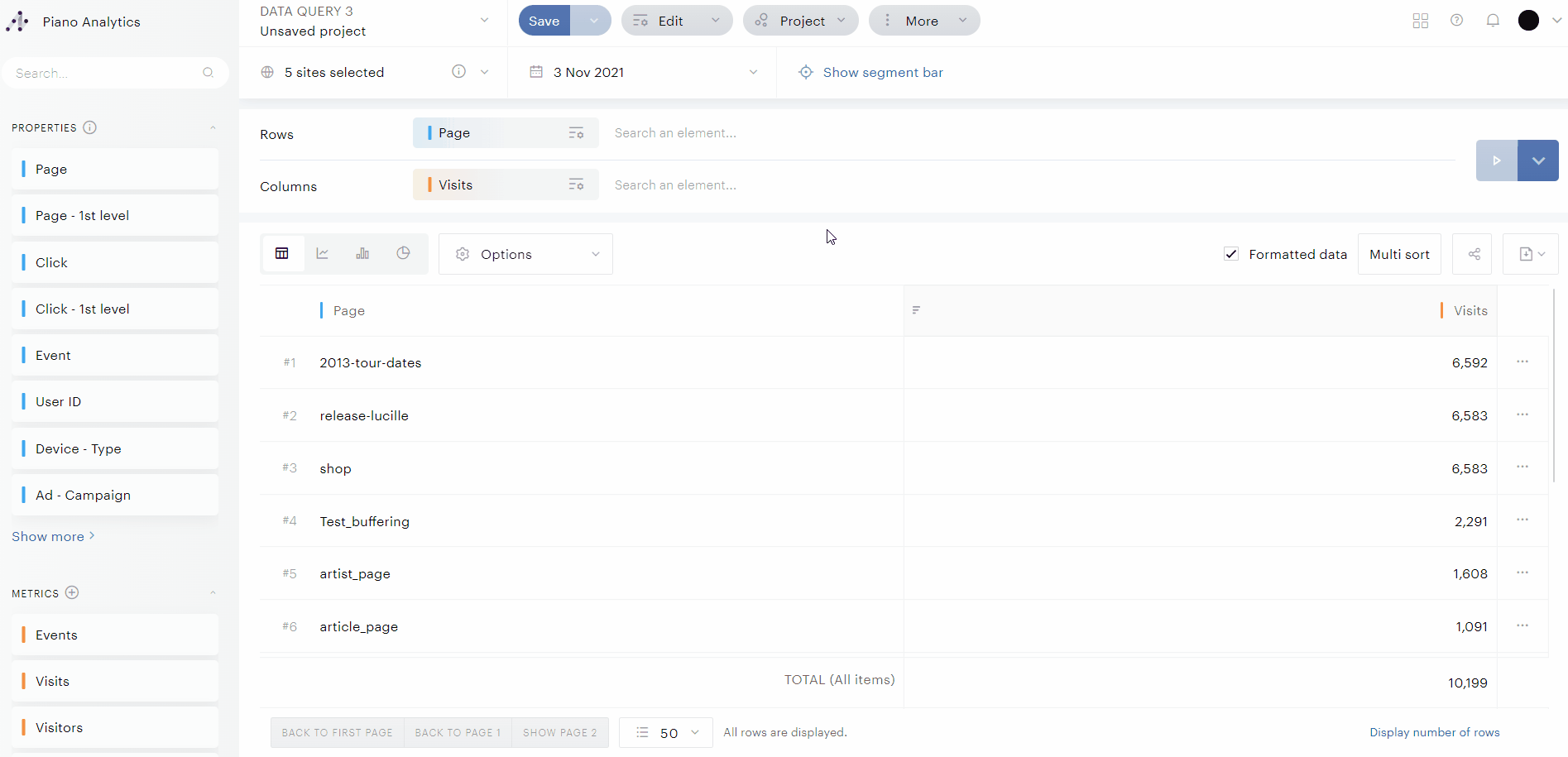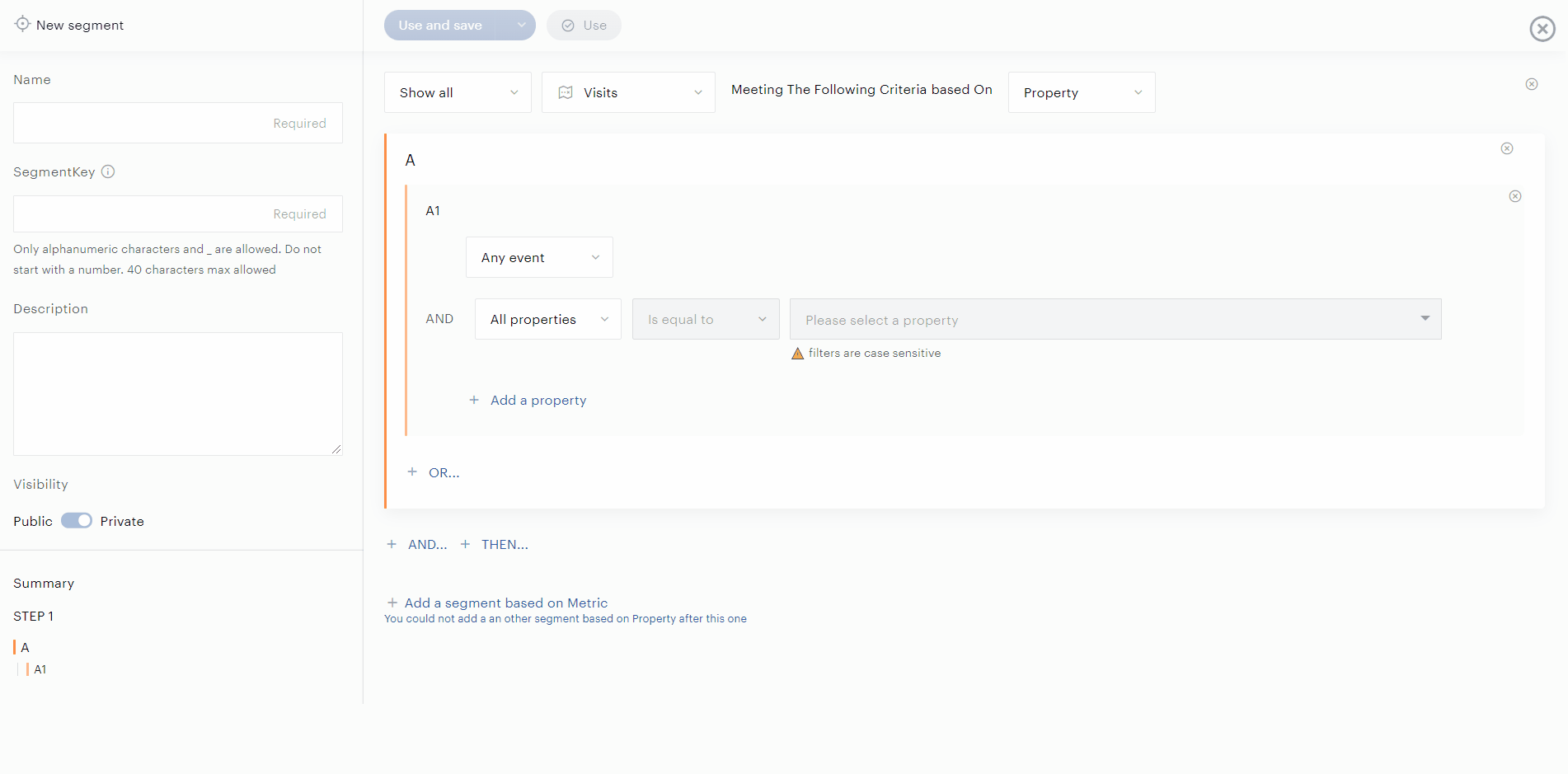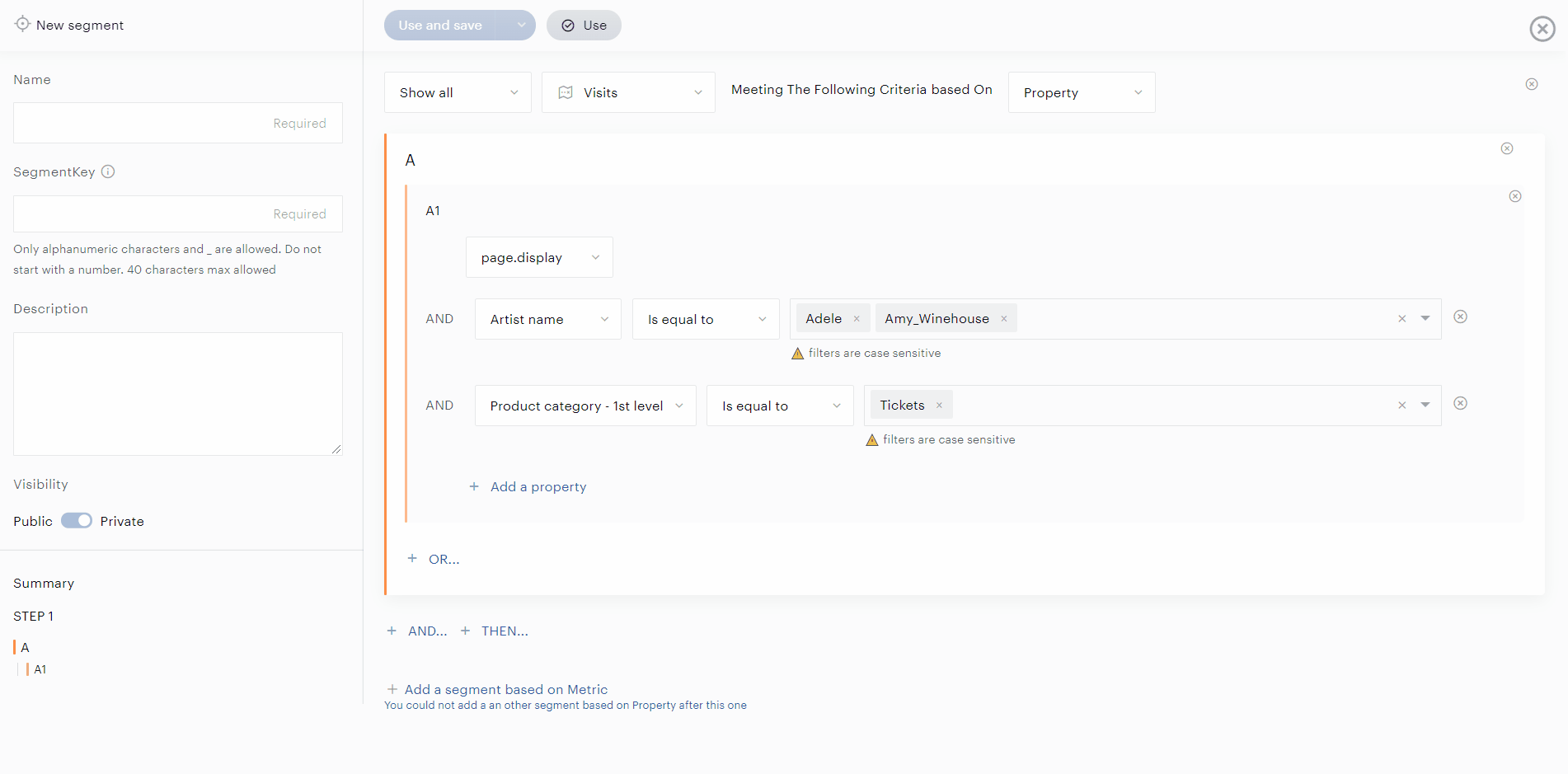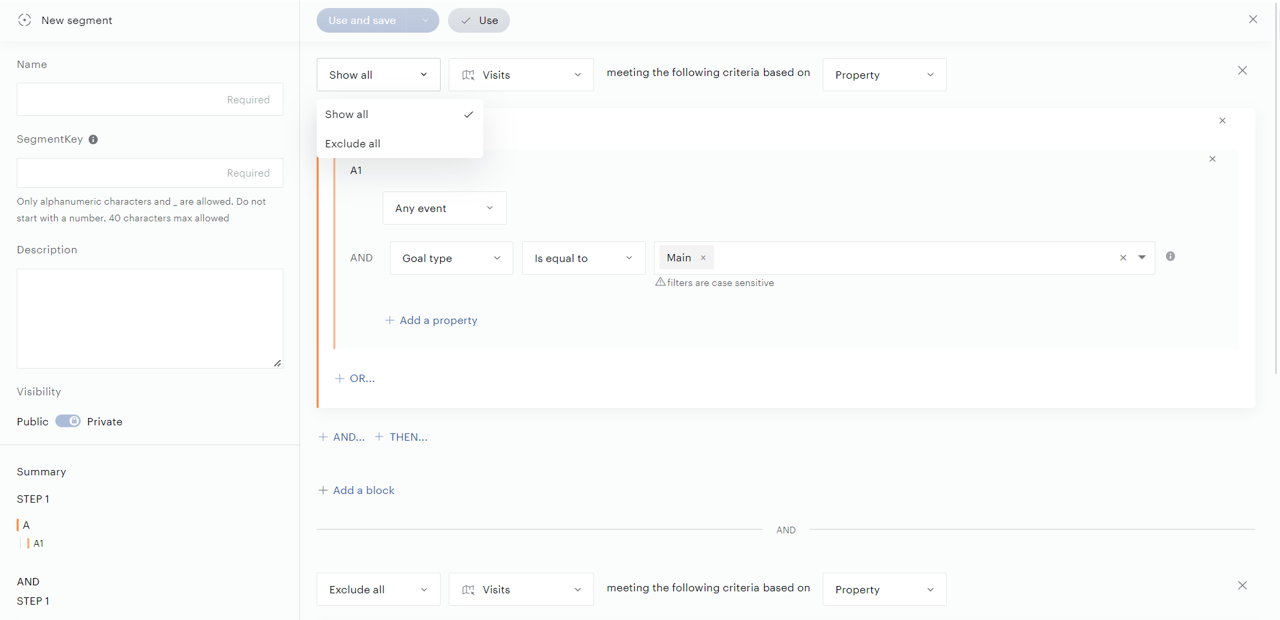Segmentation engine
Using segmentation has never been so easy
You can create a segment directly from the top menu in Data Query or via the Library.
You can save the segments you create. This will allow you to reuse them in your datasets without having to reconfigure anything. They are in the left bar, below your properties and metrics, as well as in the "Existing Segments" tab of the Segmentation Panel.

When saving a segment, a segment-key will be filled in. This is especially useful for making API calls without having to enter the segment details again.
Information
The recorded segments are common to all sites in your organisation and can therefore be used in any of your operating areas.
The different scopes of the segmentation
In order to offer you all the flexibility, the segmentation offers you 4 types of scope:
The visit scope, which corresponds to identifying a criterion (or several) and reporting all the events carried out during the visit corresponding to the criterion.
The visitor scope, which corresponds to identifying one (or more) criteria and reporting all the events carried out by the visitor corresponding to the criterion.
The user scope, which corresponds to identifying one (or more) criteria and to reporting all the events carried out by the user corresponding to the criterion.
The event scope, which corresponds to identifying one (or more) criteria and reporting all the events corresponding to the criterion. This segmentation is comparable to a filter.
The audio/video session scope, which corresponds to identifying one (or more) criteria and reporting all the events corresponding to the criterion during a single av_sessionid.
The carts scope, which corresponds to identifying one (or more) criteria and reporting all the events corresponding to the criterion during a single cart_id.
The page scope, which corresponds to identifying one (or more) criteria and reporting all the events corresponding to the criterion during a single page_viewid.
Let's take an example here with several events and a segment on the "click.action" criterion:
In the case of event segmentation, we only retrieve the exact events, so a result of 2 events.
For the visit segmentation, we identify the visits meeting the criterion and recover the entire visit, so here 2 visits (cd4 and ij2) for 3 events.
For the visitor segmentation, we identify all the visitors meeting the criterion and retrieve all their events. We then find 2 visitors (123 and 789) for a total of 6 events.
Finally, for the user segmentation, we identify all users meeting the criterion and recover all of their events. We then find 1 user (ABC) for a total of 8 events.
Combination of filters on properties of the same event
This segmentation engine will open the doors to the advanced exploitation of your tagging plan. With each tracked event (page view, click, addition to cart, video play, etc.), you will be able to analyse all the properties of these events, whether they are standard or custom.
It will therefore be very easy for you to isolate the visits during which visitors have (1) loaded a product page (2) on any device but a desktop, (3) for any of the listed artists, (4) for Goodies in either accessories or concert categories, filtered on the Known artists only (4) . All of these filters have to be tracked on the very same event, which is very powerful!
Conditions "AND" and "OR"
When you select multiple events in your segment, you can combine them with "AND" and "OR" operators to narrow your search.
It becomes, for example, very easy to select visitors who have:
EITHER added a concert or festival featuring Alicia Keys or Amy Winehouse to their shopping cart,
OR added a hoodie featuring Eminem to their shopping cart.

This is also possible to run a similar segment to get all visitors who have:
BOTH added a concert or festival featuring Alicia Keys or Amy Winehouse to their shopping cart,
AND added a hoodie featuring Eminem to their shopping cart.

Sequences of events
Sequential segmentation makes its appearance in Data Query, allowing you to select visits or visitors based on a sequence of events!
Based on the previous scenario, we could also focus on visitors who have:
FIRST added a concert or festival featuring Alicia Keys or Amy Winehouse to their shopping cart,
AND THEN added a hoodie featuring Eminem to their shopping cart.

You're able to combine 6 steps. Please note that they don't have to be strictly consecutive, other events could have happened between steps.
Cohorts of visitors and users
With this first iteration of advanced segmentation, you can quickly analyse visitor behaviour over time, especially to understand how a group of users with common characteristics (e.g. Christmas shoppers) behaved over another period (e.g. during the Christmas shopping preparation period).
You will be able to use either the segmentation "Visitors" (cookies or device ID, therefore mono-device) or "Users" (connected account, useful in cross-device).

The cohort period can be either fixed, or the same as the analysis period or relative to the period. In this case you define it as follow:

The first menu you select which mode you want
The second menu, here with the "Day value", allows to select the granularity of the period. For the moment, the relative period can be a day, a week or a month.
The last one enables to specify the shift you want
In this example, the cohort will be relative to the analysis period, it will be a one day period with a shift of a day. If your period is January, then the cohort will be on the 31st of December.
As another example, if you select "Month - 1", the cohort will be based on the complete month that is BEFORE the 1st day of you analysis period (in other word, if you study February 15th to April 8th, then your cohort period will be the full month of January
Cross-scoped cohort segmentation
Are you looking to analyse the behaviour of certain users of your mobile applications when they use your responsive site?
Or would you prefer to understand how visitors to your store behave when they browse your corporate site or vice versa?
Nothing could be simpler with inter-site segmentation - you can track users or visitors from one site to another.
Good to know
You can create a cohort without associating a property to it. This allows you, for example, to analyse the behaviour of all visitors when they are identified on your sites or applications.
Include and exclude conditions
By default, the segments are of the inclusive type, which means that the visits that will come up are those that meet the criteria in the condition.
You can simply change the option to create an exclusion type segment that will have the opposite behavior, i.e. all the visits that will come up will be those that do not meet the criteria. This is very useful when you want to exclude behaviors, such as tests you may have performed.
By adding a condition block, you can create a segment that mixes inclusion and exclusion conditions.

By adding a condition block, you can create a segment that mixes inclusion and exclusion conditions.
